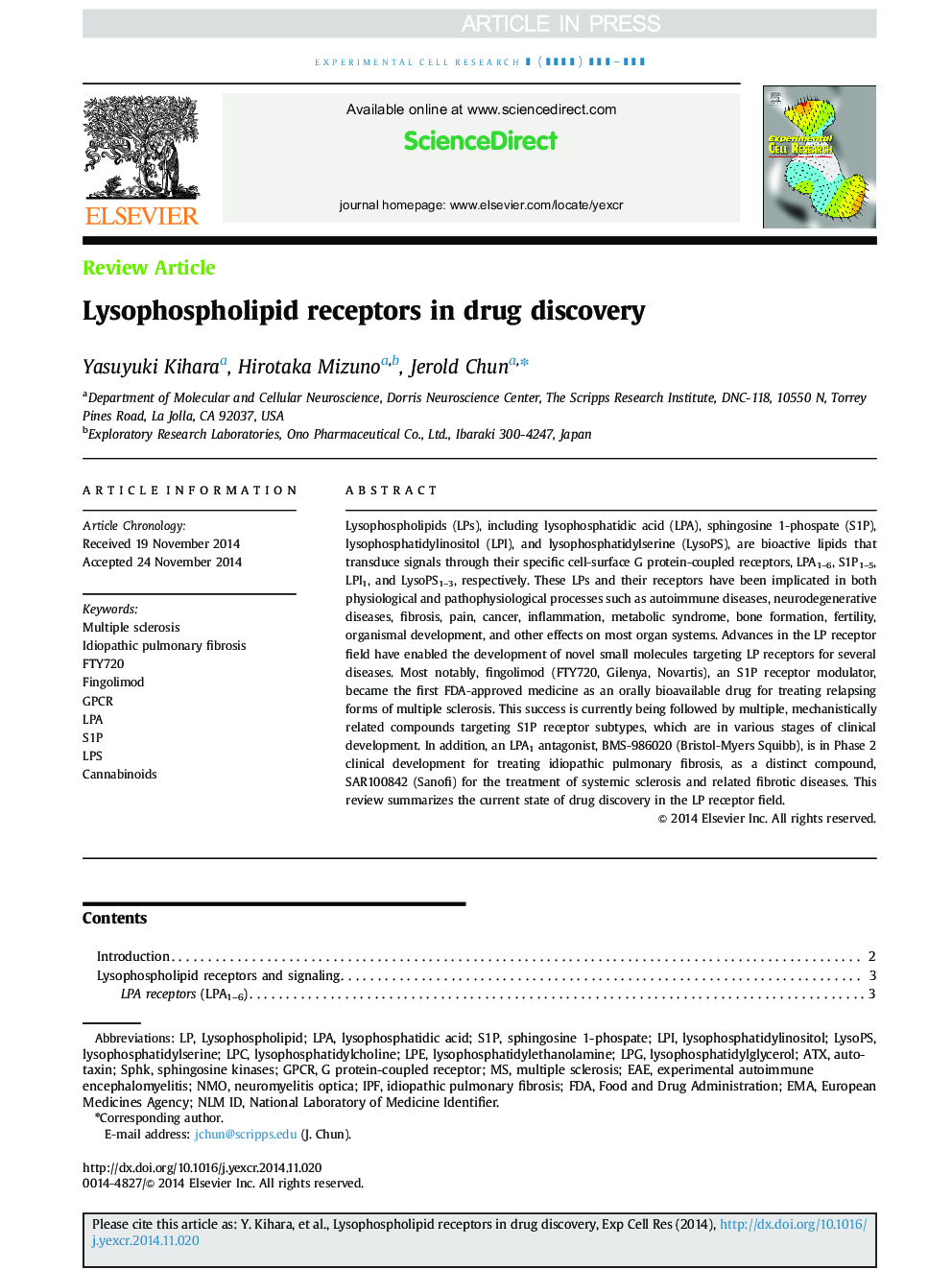| Article ID | Journal | Published Year | Pages | File Type |
|---|---|---|---|---|
| 10903794 | Experimental Cell Research | 2015 | 7 Pages |
Abstract
Lysophospholipids (LPs), including lysophosphatidic acid (LPA), sphingosine 1-phospate (S1P), lysophosphatidylinositol (LPI), and lysophosphatidylserine (LysoPS), are bioactive lipids that transduce signals through their specific cell-surface G protein-coupled receptors, LPA1-6, S1P1-5, LPI1, and LysoPS1-3, respectively. These LPs and their receptors have been implicated in both physiological and pathophysiological processes such as autoimmune diseases, neurodegenerative diseases, fibrosis, pain, cancer, inflammation, metabolic syndrome, bone formation, fertility, organismal development, and other effects on most organ systems. Advances in the LP receptor field have enabled the development of novel small molecules targeting LP receptors for several diseases. Most notably, fingolimod (FTY720, Gilenya, Novartis), an S1P receptor modulator, became the first FDA-approved medicine as an orally bioavailable drug for treating relapsing forms of multiple sclerosis. This success is currently being followed by multiple, mechanistically related compounds targeting S1P receptor subtypes, which are in various stages of clinical development. In addition, an LPA1 antagonist, BMS-986020 (Bristol-Myers Squibb), is in Phase 2 clinical development for treating idiopathic pulmonary fibrosis, as a distinct compound, SAR100842 (Sanofi) for the treatment of systemic sclerosis and related fibrotic diseases. This review summarizes the current state of drug discovery in the LP receptor field.
Keywords
LPSlysoPSFDASphingosine kinasesAutotaxinSphKNMOFTY720FingolimodLPAATXS1PGPCREAELPGlysophosphatidylethanolamineEMALPELPCLPIIPFexperimental autoimmune encephalomyelitisEuropean Medicines agencylysophosphatidic acidFood and Drug AdministrationNeuromyelitis opticaidiopathic pulmonary fibrosisLysophosphatidylcholinelysophosphatidylglycerolLysophosphatidylserinelysophospholipidLysophosphatidylinositolMultiple sclerosisCannabinoidsG protein-coupled receptor
Related Topics
Life Sciences
Biochemistry, Genetics and Molecular Biology
Cancer Research
Authors
Yasuyuki Kihara, Hirotaka Mizuno, Jerold Chun,
